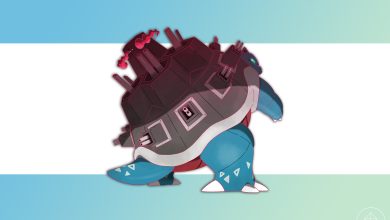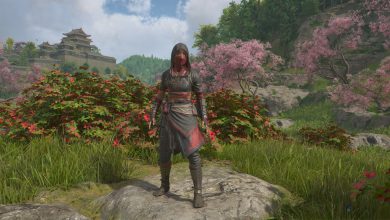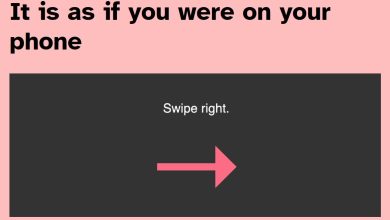If John Wick director Chad Stahelski ‘could get away with it,’ he’d fully pivot to anime


Tuesday morning, Lionsgate announced that among a trio of new projects in the John Wick universe, there will be an animated prequel movie about the night the master assassin initially broke free from his obligation to the High Table. Intended for “more mature audiences,” the movie will be directed by Shannon Tindle (Ultraman: Rising) and written by Vanessa Taylor (Game of Thrones, The Shape of Water). Keanu Reeves will return to voice Wick. (The other projects teased: John Wick 5 and a Caine spinoff directed by and starring Donnie Yen).
The official announcement of a John Wick animated prequel movie should come as no surprise. Franchise auteur Chad Stahelski (who is producing the prequel) is a longtime anime fan who has made no secret of the medium’s influence on his work (“I hope people can watch at least John Wick: Chapter 4 and go, Oh, he’s got a heavy, heavy anime influence,” he told Polygon), and has been dropping hints about the project for months. He’s also recently flexed his action design chops in that arena, working on a sequence for Ninja Kamui and serving as action designer for Shinichirō Watanabe’s new series Lazarus. Stahelski, fellow 87eleven action designer Jeremy Marinas, and their team filmed live-action sequences at their studio and sent them to Watanabe’s team in a continual collaborative process that spanned approximately a year.
Stahelski grew up as a massive fan of Watanabe’s work, and told Polygon he has “literally memorized everything of Cowboy Bebop and Samurai Champloo.” So when Watanabe and his team reached out to see if Stahelski could recommend a member of his team to give advice on Lazarus’ action design, Stahelski jumped at the opportunity and fulfilled a lifelong dream.
Polygon spoke with Stahelski, calling in from his script-covered office at 87eleven Action Design (the man is attached to approximately 2 million upcoming projects, including quite a few video game adaptations), over Zoom about his experience designing action in a new medium and his love for anime. The second part of our interview, focusing on how the collaboration with Watanabe came together, will be published later in Lazarus’ run.
Polygon: Did your experiences on Lazarus and Ninja Kamui change anything about how you think of converting animated projects into live action?
Chad Stahelski: I know your sentiment, but I wouldn’t use the word “converting.” We’re not converting anything. We’re an ingredient. Converting is when we lock something in and they’re just going to translate it over. That couldn’t be further from the process. Remember, it’s not just building a house. You’re building a house in a different dimension where gravity and rules don’t mean the same thing.
I’m jealous. If I could draw a third as good, an eighth as good as Watanabe-san, the shit that would come out of my fucking head… If I could get it down, I would never leave this room. I would draw all day long. I have to go out and choose people and get it. So I’m constantly defined by the talent of people, the cameramen, the angles, the time, the money. If I could just take a piece of paper and draw, there are no limits. I could draw forever. I think I’m very open-minded, and I think I’m fairly creative and all that stuff, but you ask any creative in the film industry what terrifies them the most? I guess the number one answer would always be a blank piece of paper. Now this seems funny. If I took away all references for you and you had to create your own thing, brand-new original idea, a blank piece of paper, that should scare the shit out of you.

That’s what the animators do. There is nothing but what’s in his head. I go to location. People say, Oh, John Wick is beautiful. I went to fucking Paris, guys. I could spin myself around, open my eyes, and I’d find a good fucking place to shoot. Yeah, I’m framing it, I’m shining it, don’t get me wrong. I’m doing a great job washing the car, but I didn’t invent the car. I made choices. So if anything, I’m a genius at choices, but I didn’t come up with the creative vision. I’m working that out. These guys, the animators, there is literally nothing on that piece of paper. And then they have to draw it. Even if they were copying a real-world thing like the Eiffel Tower, they have to draw it into perspective in a way that best fits them.
People say, Oh, John Wick is beautiful. I went to fucking Paris, guys. I could spin myself around, open my eyes, and I’d find a good fucking place to shoot
They have an opportunity. They take the motions. Let’s say our choreography is in the Eiffel Tower, right? It’s something that we’ve given them, but now they have to literally do the Star Trek transporter thing and go interdimensional with it and take that in any direction they can take. Our guys aren’t always perfect. But [animators] can make the perfect punch. They can make the perfect kick. They can move the camera anywhere they want. They can see bones break, they can see teeth all in one shot. They don’t have to edit. They don’t have to do a digital zoom. They don’t have to stitch. They have a whole ’nother dimension that we don’t have. So if anything, we’re just an ingredient in the cake. They still got to fucking bake. We’re not equals, I’m just giving ’em good stuff.
For someone as detail-oriented as you, it must be a dream to be able to have that level of control over every single frame and pixel.
Everyone wonders why directors always want to go do anime. I bring in a great cast, and all the cast has to do is talk into a mic. I can act it out, and then I can have my animators do the impossible.
Are you going to try and do more of that in the future?
Yeah, we would love to. Again, I wish I was a Watanabe-san-level guy at that, but that’s something I have to ease into. And I’m going to go with what I know right now, and I think I’m decent at taking real-world stuff and making it, so a couple more of those. But at the same time, yeah, this and what we’re currently doing with John Wick are things we want to venture into that world.
Are you interested in taking drawing lessons or anything like that?
Oh, I suck, that’s never going to happen. You got to know thyself, right?

Did yours and Jeremy’s experience designing action for Ninja Kamui help?
We had already been doing a bunch of Lazarus as we helped out on Ninja Kamui, and that was just for a sequence. But [another] great director [Sunghoo Park] who knew what he wanted. I bring in several different choreographers. Every movie I do, I want that different flavor, different flair. He had a great team that was doing really good. They just wanted to see what we would do and how we interpreted the language that they had already kind of established. And you come up with this great synergy. One of my favorite things to do is mix it up with other teams, because you always get something, I won’t say better or worse, but you always get something a little fresh, which is great. And I think I wish more people would do it that way, but stunt teams don’t really work that way, unfortunately.
How did you think about making Lazarus’ action feel like anime?
Me and Jeremy, we’re huge anime fans, so we get it. [In real life] I can pick you up and throw you for 2 or 3 feet. That’s it. I could kick you and knock you back maybe 2 meters, but that’s not anime. In anime, you can go back a mile. Our kind of movement doesn’t work the same way anime movement does, so our emotions have to be bigger and tighter. There’s more sequencing. You can get away with stuff in anime that we can’t do practically. So you can’t let yourself be the ceiling. We know anime can take it to an unlimited nature. We just have to find out where the creative apex should be for this kind of character, reality versus fantasy. How do we stretch it laterally or horizontally? And that’s up to the directors. So we try to go big. We use wires. We’ll do things that give the animators a sense of things, and then they have to dial it in to fit the anime to make it look great. It’s a constant process between us and the animators.

Were there any limitations you found in animation when designing the action?
Only the process and the time. At some point, no matter what medium or platform we’re in, there’s always a schedule and a budget. As far as creativity goes, if you’re asking that, no, it’s the people. Look, it always starts from story, character, and the reality that you’re based in. If you’re doing a Bourne Identity kind of movie, your goal is to convince the audience that this is real. That’s your limitation: How do you suspend disbelief, and what is your expectation of reality? Now, if you’re telling me that’s not a concern for you, then it’s up to the director or the creative team to go, What are my parameters? Not that we can’t bend and stretch. It’s not a hard line. OK, so you can’t hang on a drone, so we’ll stretch it there. We can’t actually survive this kind of fall, but we’ll take that. You can’t actually dodge bullets, but we’ll take that. As long as you help define your own rules, there’s as many limits or as few limits as you choose to dictate.
Turning that around, were there any things that you had wanted to try in live action, but weren’t safe or possible, that you got to play with here?
You could do so much. That’s the thing with anime. Look at the opening episode. You want me to run on a monorail, on drones? Of course! Like, fucking anime is incredible. If I could get away with it, having a career in anime as an action design guy wouldn’t be a bad gig. I wish more people would ask us to do it. I’m surprised we haven’t, I’m kind of bummed. I wish more people would call about it.
I think you might be getting more calls after this.
New episodes of Lazarus air every Saturday at midnight on Adult Swim.





